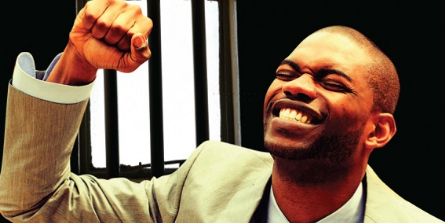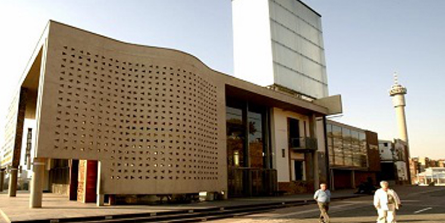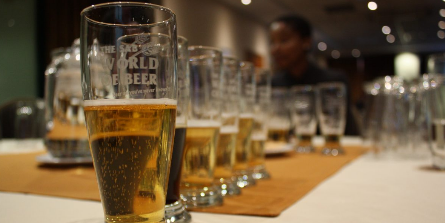Small museum packs a punch
West of the Johannesburg CBD is the suburb of Pageview, once known as Fietas, and the home of a thriving Indian community. In its heyday, Johannesburgers all over flocked to its main thoroughfare, 14th Street, in search of bargains of all sorts.
The infamous Group Areas Act had a devastating effect on Fietas in the apartheid years, and forced removals tore the community apart.
In one of the few surviving original buildings, the tiny Fietas Museum has been running since 2013. Here an exhibition of images by famed photographers David Goldblatt and Paul Weinberg reveal the before, during and after of Fietas. It is accompanied by the personal testimonies of former residents of the neighbourhood.
The curator of the museum, Salma Patel, suggests that visitors combine a visit with a walking tour of the area, starting with a half hour in the museum, followed by an hour on foot. The facility is open on Mondays-Thursdays and Saturdays.
It is also a good idea to combine Fietas Museum with the nearby Sophiatown Heritage and Cultural Centre, which has its own tale of forced removals. Its focus is the original 1930s home of Dr A B Xuma, again one of the original neighbourhood homes that was not destroyed, and is now a National Heritage Site.
On display are the iconic 1950s photographs of Jurgen Schadeberg and others capturing Sophiatown’s heady times when music was a force that transcended all barriers. Walking tours can also be booked. The Sof’town Urban Experience Tour combines museum, walk and a meeting with a resident who was forced to leave but has since returned. It must be booked in advance.
Amandla Theatrical Tour ramps up the drama of the Soweto story
Tourvest Destination Management has injected a dose of theatre into the Soweto tour genre, bringing historic personalities to life with the use of actor/guides. Participants will find themselves being led through the township’s struggle highlights by Walter Sisulu, Ruth First, or even Nelson Mandela, dressed in costume and in character for a full day.

The Amandla Theatrical Tour includes the headquarters for the banned military wing ANC in 1960, Liliesleaf Farm, and ‘the church that refused to allow God’s name to be used to justify discrimination and repression’, the Regina Mundi Church. It visits the exact spot where Hector Pieterson was shot during the June 1976 uprising and Vilakazi Street, residence of two Nobel Prize winners (Tutu and Mandela). Freedom Square in Soweto, Newtown sites, the Carlton Centre and Constitution Hill in the Johannesburg CBD are also on the story-telling route.
Constitution Hill continues to impress
Constitution Hill can now be toured with the convenience of a Bluetooth-enabled app, giving visitors the flexibility of touring the 11-hectare precinct outside of tour departures. The app also provides augmented information on the site.

Additional information, such as the stories of past prisoners of the old Fort, always rounds out the Con Hill experience and fills in the gaps. In conversation with Jeanny Morulane, GM Marketing, she drew attention to the book, Mapping Memory, in which former female prisoners recount the conditions that led to their sojourns at Number 4, the Women’s Jail in the Con Hill precinct. The book by Segal, Van der Berg and Madikida, reveals how pass laws, poverty banning orders and exile have affected the lives of ordinary women, leading to activism or crime. Imprisonment now long over, their lives remain difficult.
The popularity of 21-year-old Constitution Hill was recently reaffirmed when the Johannesburg landmark won two TripAdvisor awards for 2017. The TripAdvisor 2017 Travellers’ Choice Award for fourth place in the Top 10 Landmarks – South Africa category, effectively positioned Constitution Hill in the top 1% of attractions worldwide. The Certificate of Excellence for consistently outstanding reviews, confirmed the site’s popularity among domestic and international visitors.
Marshalltown memories
Marshalltown, on the southern edge of Johannesburg’s central business district, would not be one’s first thought when contemplating a history tour of the city. But it’s a fascinating corner of Johannesburg’s heart.
This district constitutes the signature tour of JoburgPlaces, which offers inner-city walking tours. Gerald Garner, who started the walks, describes the Marshalltown visit as historically intense and thorough. It is interspersed with public art and sidewalk cafés.
“It is the tour we present most often and the one we love the most,” says Garner. “We have been doing this tour for over six years and we literally know every nook and cranny of this part of town. The tour tells the story of Joburg’s gold-rush inception, boom days, eventual decline and current regeneration.”
Starting at the cool bar-cum-braai eatery, Hangout Jozi at One Eloff, the tour visits Gandhi Square and the pedestrianised Main Street in the mining district, passing historic landmarks such as the Impala Stampede Sculpture and the Shadow Boxer Sculpture in front of Chancellor House where Mandela and Tambo had their law offices in the early 1950s. It takes place from 14h30-15h30 every Wednesday-Saturday. Private tours can be arranged for groups of 10 or less.
Old station comes back to life with tourism goal
Visitors to Newtown would have noticed the glass façade of the Old Park Station building, which, despite its sad state, remains strikingly graceful.
Good news is that the heritage building has just been relaunched as The Station Regional Social Market, a platform for young Gauteng entrepreneurs to showcase their businesses in the heart of Joburg.
The venue will afford them the chance to showcase the products of small business to tourists and Johannesburg residents twice weekly – on Friday nights and Sundays. It will meld well with the township tourism experience and offer an additional attraction to Newtown. Visitors can expect food, fashion and entertainment.
"Through the Regional Social Market we hope to address issues of youth unemployment and give support to small business owners from the townships," said Director of the Station, Nkululeko Ngubane. "It is important to encourage young people to be entrepreneurs instead of job seekers and create an enabling environment for their small businesses to thrive," he added.
The first market will be held on September 15.
SAB World of Beer still going strong
It’s 22 years since the SAB World of Beer began offering explorations into the history of South African beer. It was also one of the first major investments in Newtown, spurring its development as Johannesburg’s cultural precinct.

The 75-minute beer journey that visitors follow begins with the drink’s ancient origins, to its African and European heritage, and its role in South Africa’s story, past, present and future. Some of the facts imparted are fascinating – such as traditional African and European beer brewing was mostly women’s work, or that shebeen is an Irish word brought here by miners and means ‘an unlicensed house selling alcoholic beverages’. It ends with a tasting of SAB’s five power brands.






















